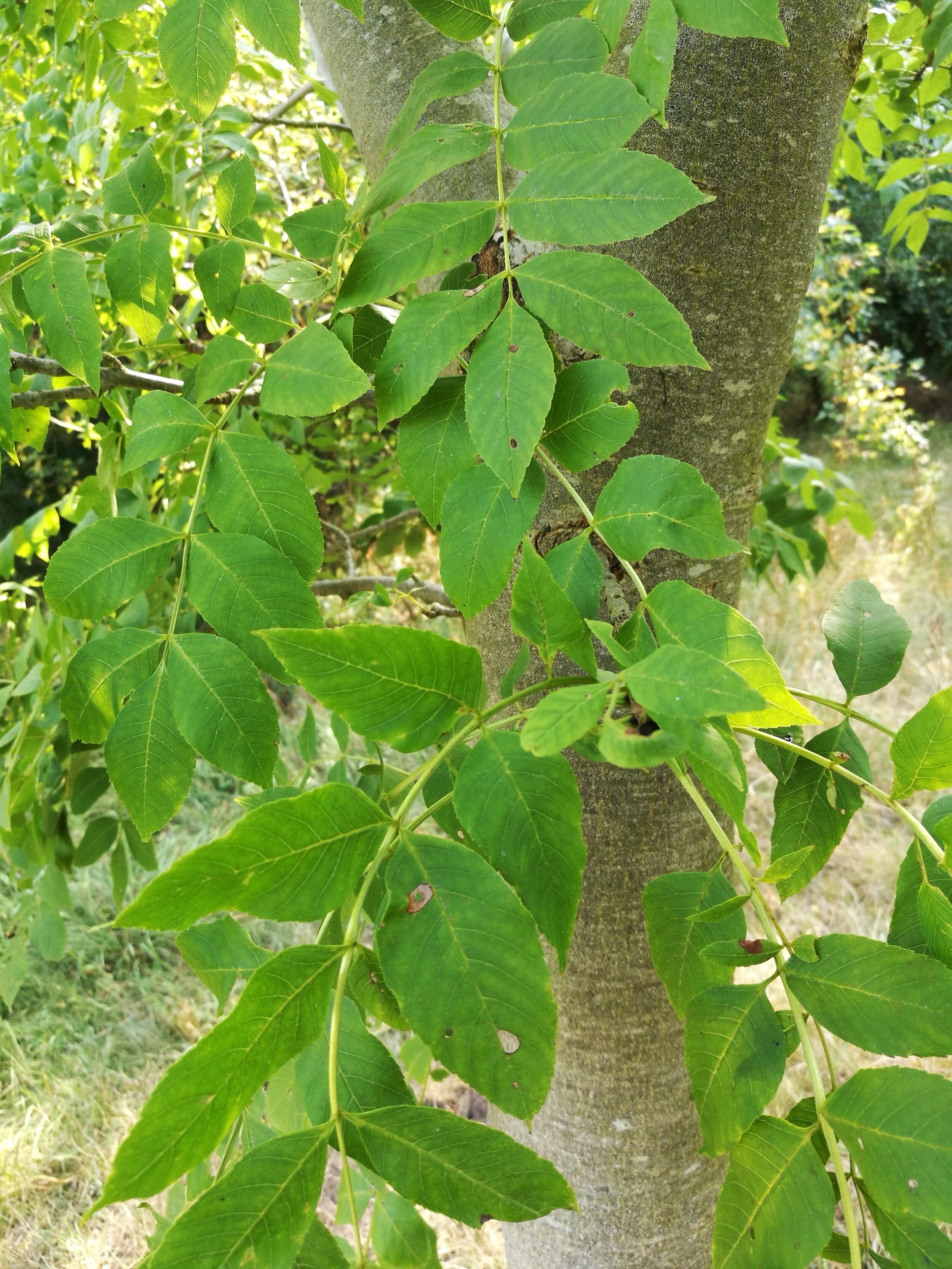Common Ash (Fraxinus excelsior)
Ash is one of the most storied trees in Western mythologies. Yggdrasil, the World Tree, in Norse mythology is commonly perceived to have been an Ash, on which Odin hung for nine days and nights to receive the runes and their wisdom. The first human beings were, according to legend, born of ash trees. Sacred to the ancient Celts and their Druid priests as well, it was thought to be imbued with magical powers. It was also the chosen material for spear shafts, arrows and bows (as well as wands) for its excellent strength and flexibility. Ash was commonly coppiced as it is a fast growing, straight-grained wood that made for perfect building and woodworking materials, as well as fuel. Wayfarers may also benefit from Ash’s wonderful habit of turning its leaves, even its whole canopy, to follow the sun. Now, ash are threatened by Ash dieback and may, in the near future, no longer be one of the most common tree in the English countryside.
What it looks like
Ash can grow very tall, up to 35m in height, with broad, bushy crowns. They will typically grow together in groves and can be coppiced. Many English ash woodlands bear the signs of this ancient practice, with canopy trees being multi-stemmed, former stools of former coppicing. Ash bark is smooth, fissuring with age, and light brown or grey, often playing host to lichens. Its twigs are smooth and angular. Ash leaves grown in pairs, opposite each other along long, flexible green twigs, which fall, still green, in the autumn. There will be a terminal leaf at the end of the twig as well. Leaves are pointed and finely toothed, often discolouring slightly, to a mottled yellow. They are shaped like an open eye. Flowers appear in spring, and are clusters of small purple blossoms. Ash form large clumps of oval-shaped keys through the summer and autumn. These begin green and turn golden brown. They remain on the tree after the leaves have fallen (making ash easy to spot from a distance) and fall over the winter and early spring.
Uses
Ash is valuable as a building material and for tool making, having straight grain. It is tough, hard, and flexible. It is valuable also as firewood and as a material for charcoal making. The green seeds can be eaten.

